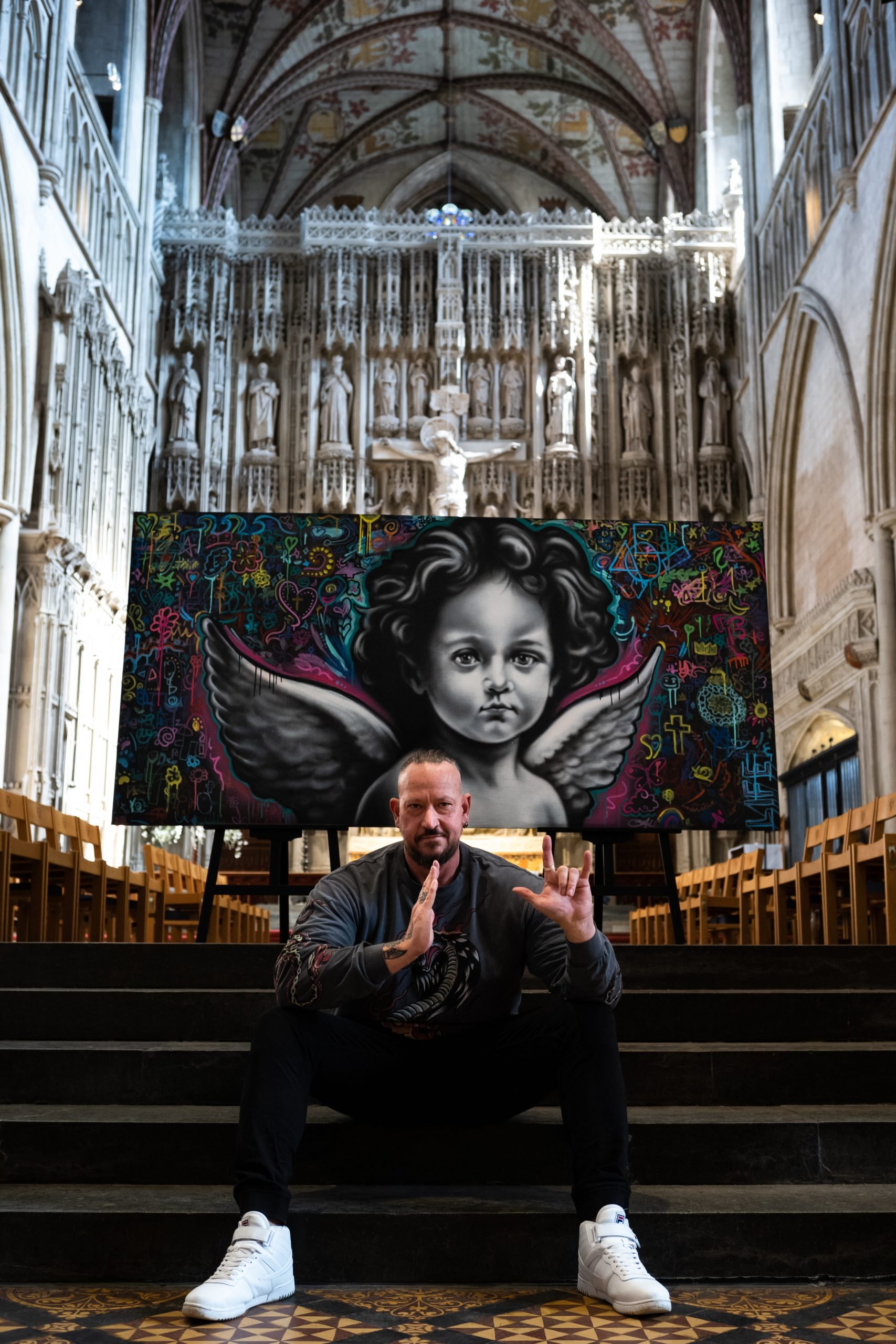
Ant Steel is not your typical graffiti artist. He’s not the type to scale walls or stealthily spray-paint street corners under the cover of darkness. Steel asks for permission to paint. Always. He’s not interested in tags or gaudy throwies and tends to paint vibrant, highly realistic works as community projects.
Steel’s more formal approach to graffiti stems from a career in graphic design that involved preparing images for advertisement. If it was a spray job, Steel would go and watch the painters dangle off the side of giant billboards, his feet firmly on the ground. Only more recently has Steel begun creating a different type of public art: a mural of Queen Elizabeth II outside a shopping center, an extensive pro-Ukraine painting on a town wall—and now, a series of works as artist-in-residence at St Albans Cathedral, Britain’s oldest site of continuous Christian worship.
The wall depicting a peregrine falcon Steel painted for St Albans Film Festival. Photo: courtesy Ant Steel.
“Street art has a loud voice and I want it to shout as loud as possible,” Steel told Artnet News. “At the cathedral, I have a remit of running workshops and events. My goal is to be involved within the community.”
To be clear, Steel won’t be transforming the stone walls of St Albans with color, though, in a curious echo, the cathedral is riddled with thousands of carved graffiti marks dating back hundreds of years. Instead, Steel will be creating large-scale works on boards as well as working with children, asylum seekers, refugees and adults to create an exhibition in November, one he believes will “turn some heads.”
Steel’s wall for Ukraine in St Albans. Photo: courtesy Ant Steel.
The Cathedral approached Steel after learning about the workshops he led for the St Albans Film Festival as part of its broader push to attract younger and more diverse audiences. The landmark has been running its artist-in-residence program since 2018.
“The Cathedral has long been a patron of arts and is keen to support local artists,” Kevin Walton, the Cathedral’s Canon Chancellor, told Artnet News. “Ant Steel’s fresh and engaging artistic offer and his dedicated approach to community work matched our vision.”
Walton was also drawn to the idea of a contemporary graffiti artist playing off the marks worked into the Cathedral. “We are consciously building on our long heritage in this place,” Walton said.
As the town of St Albans’ most notable landmark, the Cathedral is striving to refine itself in the modern era, not merely a religious site, but one of community cultural engagement, one Steel calls “a beacon of hope on the Hertfordshire horizon.”
See more images from the artist in resident program below:
Ant Steel at work outside St Albans Cathedral. Photo: courtesy Ant Steel.
One of Ant Steel’s workshops taking place outside St Albans Cathedral. Photo: Ant Steel.
St Albans Cathedral has invited Ant Steel as its artist-in-residence. Photo: courtesy Ant Steel.
Ant Steel’s first artwork as artist in residence, a cherub. Photo: courtesy Ant Steel.